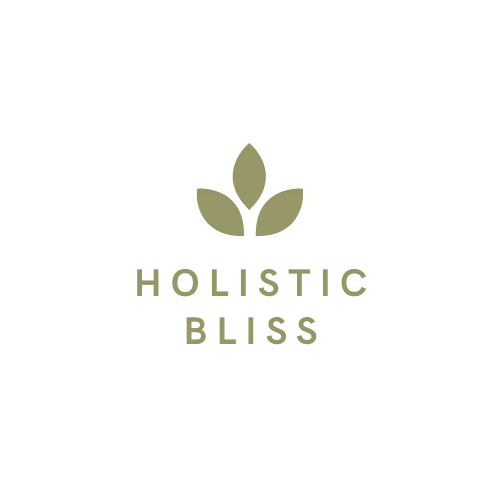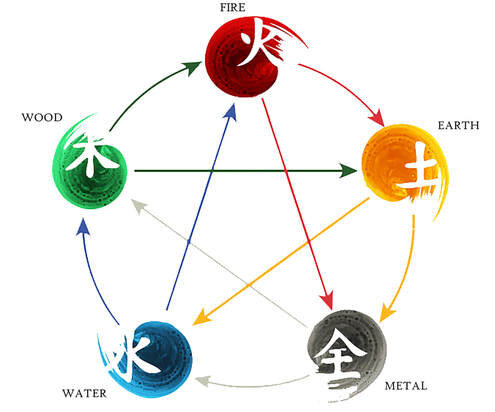Yin Yoga & The Five Element Theory
What is the five-element theory & how does this relate to Yin Yoga?
Wood – Fire – Earth – Metal – Water
Let’s start with what the five elements relate to and further down I will also break down each of the elements according to the seasons and organ pairs they relate to. Then how this is used within a Yin Yoga practice.
The five elements, also known as the five phases or Wu Xing, are the representation of how Qi moves throughout the body in Traditional Chinese Medicine (TCM).
Although hard to define according to Western cultures, Qi is often translated as energy. However, it is so much more than simply electrical vibrations. Qi is the air that we breathe, the food that we eat, the environment we consume, the emotions and thoughts that we experience, all of which combined manifest or are held within the Nervous system, blood and tissues of the body through which it travels.
When Qi is travelling freely the 5 elements are said to be in balance, as Qi needs to be moving constantly without obstruction for optimum health.
But imbalances between the phases of Water, Wood, Fire, Earth and Metal and their corresponding energetic channels or energetic highways (meridians) can cause the Qi to stagnate or become deficient or weak. At the other extremes Qi imbalances become excessive and destructive.
Each of these five elements and its pathways is represented by the energy that our main internal organs govern.
Each feeds into and supports the other in a continuous cyclic manner, each piece of this complex puzzle as paramount to the completion of the whole as the next. Viewing your health and wellbeing in terms of Wu Xing is to live in harmony between your internal and external landscapes and to flow in accordance with the constantly changing cycles of the seasons of life.
Each of the five elements also relate to and correspond with the seasons throughout the year. You will notice at different times of the year that working more harmoniously with both your own energetic balance and with what is happening around you within nature at that particular time of year, also helps you to cultivate more balance & optimise your health and wellbeing.
Here is a breakdown of the seasons, which element relates to that season and some common behaviours or things to be aware of with regards to both our physical and emotional wellbeing at these particular times of year.
The Five Elements and the Seasons of the Year
Spring – During the season of Spring, the Wood energy arises. Wood is associated with movement and is a time of emerging Yang (Yang – more active energy). It is a transition from a season of Yin to a season of Yang: death to growth and cold to warmth. Similar to how new growth begins to push through the frozen Earth in Spring, Wood energy is expansive, associated with growth and development. In the human body, wood energy is the movement of your muscles and the activity of your tissues, energetically the wood element also relates to the Liver and gallbladder meridians. The colour related to wood is Green. Spring is reminding us of new growth, to let go of the past and Wood energy demands free expression and space for expansion, imbalances can give rise to feelings of resentment, anger, and jealousy.
Summer – Just as Spring develops naturally into Summer, so too does Wood into the full Yang energy of Fire. Fire is the aggressive, creative energy and when energetically we are at the height of Yang. The most energetic phase, where all life flourishes and where the action takes place. Summer energy is our time to expand, to move forward with our ideas. Fire energy relates to our motivation and confidence to create.
Connected to our hearts, the seat of our emotions and our small intestine the sorter, deciding what needs to be absorbed and what needs to be expelled. The colour related to the fire element is red and imbalances can include feelings of stress/anxiety/over reactive if there is too much fire energy or lethargic/stagnant if too little.
Late Summer – Towards the end of Summer, fire energy begins to cool and we move into the Earth elemental energy, this is the season of late summer. In this period the activities of growth and decline are balanced. Earth is the aspect of all the energies in harmony, the Yang energies of Spring and Summer, and Yin energies of Autumn and Winter. Late summer reminds us that Mother Earth gives us all that we need, reminding us that we are one with nature and that we should follow energetic movements similar to the natural cycle to stay in balance. The colour related to the Earth element is yellow, the colour of the sun and earth. Within the body, our earth’s energy relates to the stomach, spleen, and pancreas. If our earth energy is out of balance our
digestion can suffer, this will affect our whole system, emotional imbalances can show as worry and anxiety.
Autumn – As Summer passes and we move into Autumn, the energy of Metal prevails. Metal is the energy of accumulation and releasing of waste, as emerging Yin (Winter/cooler energy) waste is eliminated, and only the essence is kept ready for the next cycle of nature. Autumn reminds us of the need for letting go of what is no longer required or serving us.
Metal can remind us of our purity and to remember that we are much more than our daily activities. The colour related to the metal element is white and controls the lungs and large intestine which are both connected to the internal and external world of the environment, what we inhale/absorb and what we let go of both physically and emotionally. Resisting this energy and holding onto, negative behaviours, thoughts, words, or old wounds can create imbalances such as sadness, grief, and resentment.
Winter – Water is the elemental energy associated with Winter, Water is the stillness and cooling energy and mature Yin season. Winter is a time for rest and rejuvenation, during which energy is conserved. In the human body, water relates to our essential fluids, such as hormones, lymph, and marrow. The colour related to the Water element is a dark inky blue or black, all colours in their concentrated form. In nature, water is expelled by excessive heat. In our bodies, water is depleted by excessive emotions such as Fear. The way to conserve this energy is to learn when to rest and listen to your own needs, flowing like water through obstacles.
So, how do we work with the five elements in Yin Yoga?
Well, by practicing pranayama (breathwork) specific Yin Yoga postures, mindful movement, and Meditation. When practiced regularly these yogic techniques will help to support you both physically and emotionally in maintaining a healthy flow of Qi throughout the body, working more harmoniously with the seasons of the year and to practice or live your life more closely aligned to your common behaviours, personality traits and how your physical and emotional body responds to the stresses life will or has already throw at us.
Pranayama is used to calm the mind and body, support the body in sending your breath as efficiently as possible throughout the body and certain breath work can support particular elements more so than others. A common mantra I use when teaching or when practicing yoga ‘Where your breath and attention goes the energy flows’.
We then practice specific Yin Yoga postures themed around the element season and corresponding Organ Meridian pairs, creating a controlled stress or pressure with the support of the ground or props, around various points of the body around the areas of the organ pair meridian pathways/energetic highways. This controlled stress or pressure works to release blockages or tension held in the bodies connective tissues and nervous system, creating more balance, movement and harmony within the body both physically and energetically. Also improving our ability to respond or adapt our behaviours/mindset to align more closely to nature and the current seasons.
Yin yoga is also often described as a stepping stone into the world of meditation, which has far reaching benefits to our mental and physical wellbeing and maybe a topic that I will expand on further in a future blog post. Due to the longer holds of yin yoga postures, the practitioner has a chance to explore sensation, and their reaction to these sensations and the experience they can create.
Yin Yoga is not a practice about advanced postures, more about advancing our ability to observe and be present with our bodies physical and emotional state. Using less props and spending more time in each posture is the more common way to progress your yin practice. However, the focus is also directed towards cultivating more mental strength, tolerance and patience. The ability to sit with intense sensations and do nothing, developing the ability to be non-reactive. This aspect of the yin practice is closer to the practice of meditation and mindfulness. Using breath awareness, awareness of sensations in the body, guided visualisation or meditations and mindful movement is used to help support this aspect of yin yoga.
This is quite a heavy topic to breakdown, and I hope I have made it a little clearer as to why in my classes I’m mentioning or theming them around the five elements or why it’s used so widely within world of yin yoga.
This may have also been helpful to those of you out there who are a beginner to yoga or yin yoga and would like to have a better understanding of the reasons and benefits of this beautiful and fascinating practice.
Either way I hope you enjoyed reading 😊 I would love to hear your thoughts.
For questions or to find out more about my online and in person classes, workshops or retreats, head over to www.myholisticbliss.com or you can find me on Instagram @myholisticbliss and Facebook @Holisticblissyork
Debbie Jenkins
My Holistic Bliss xx



